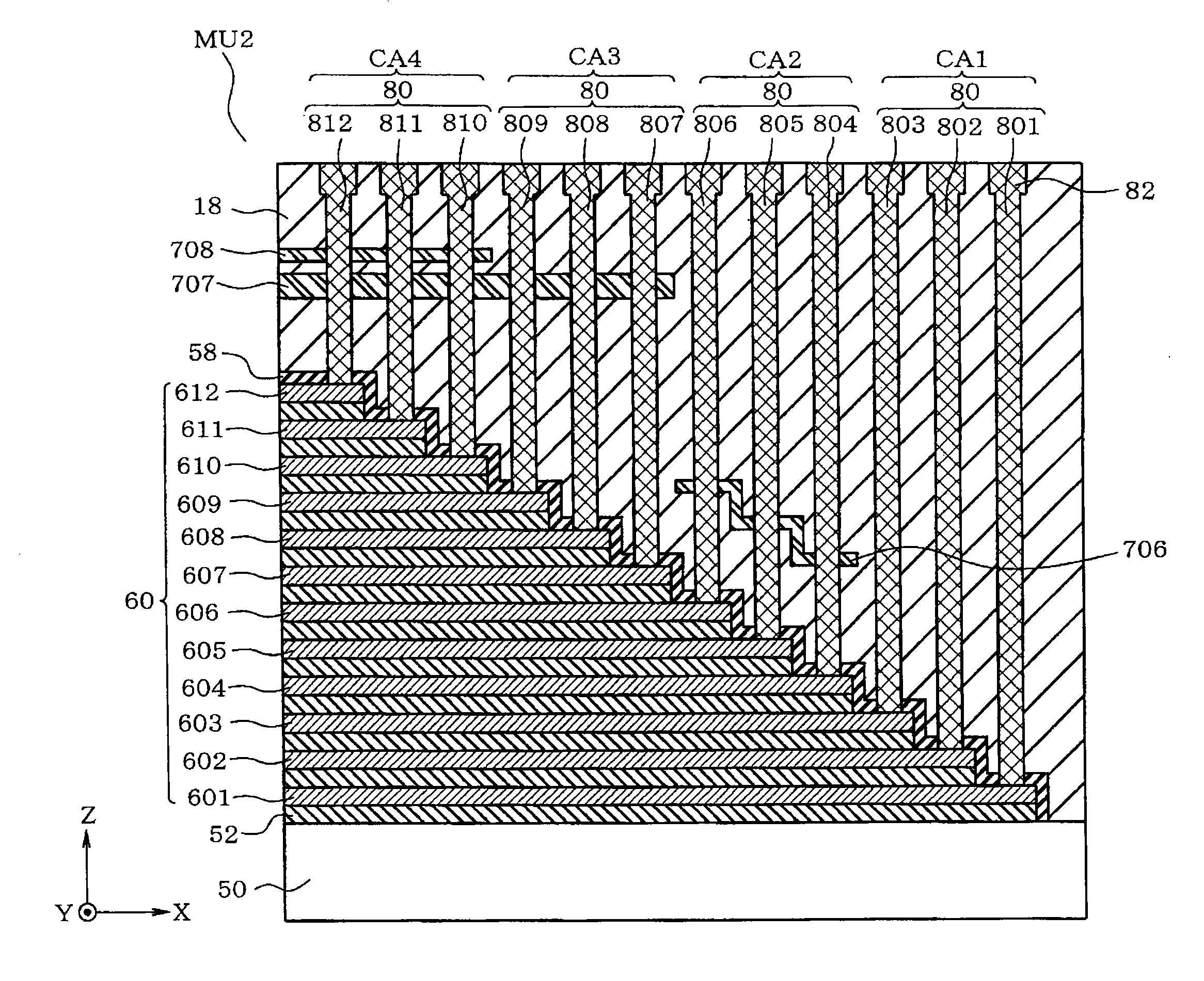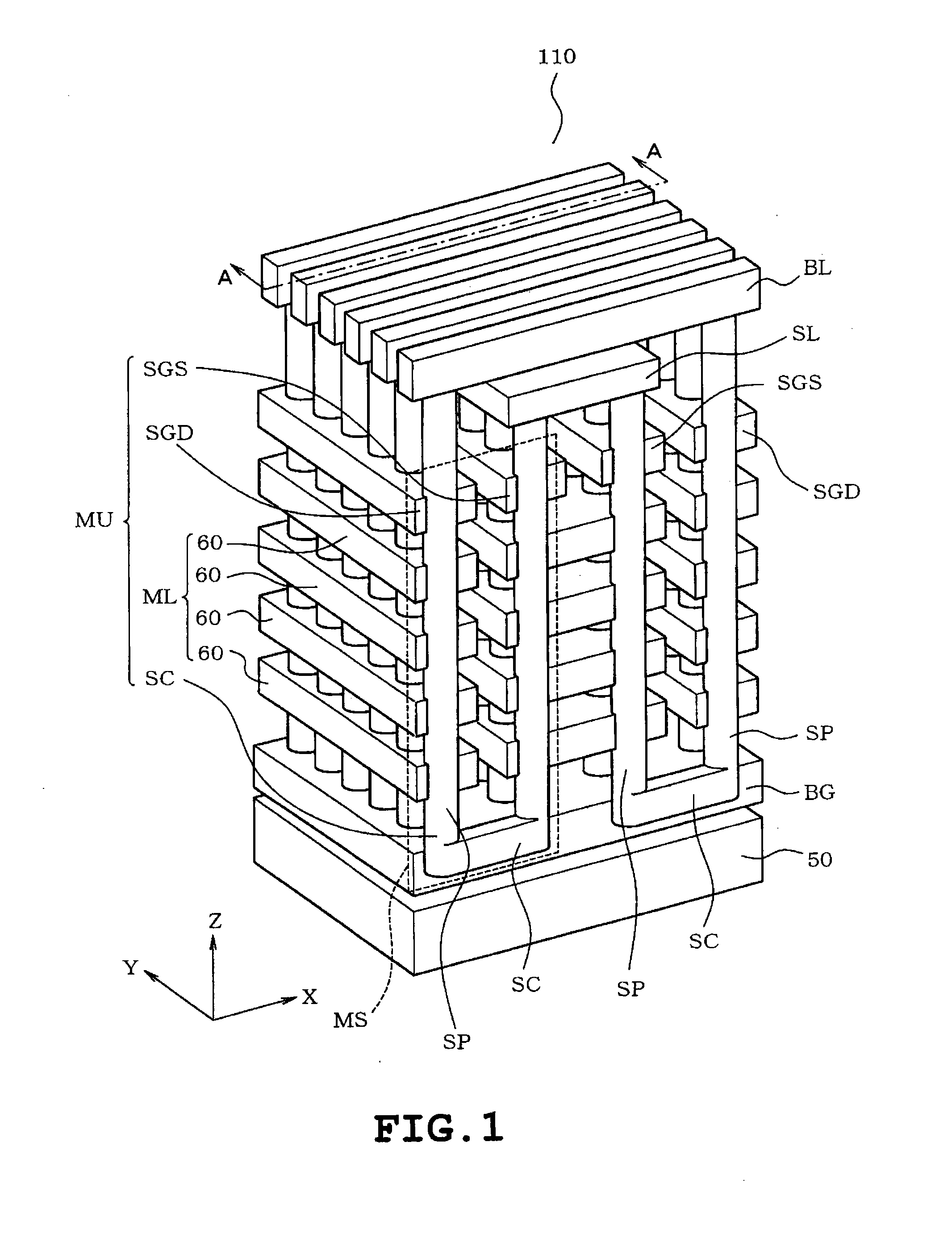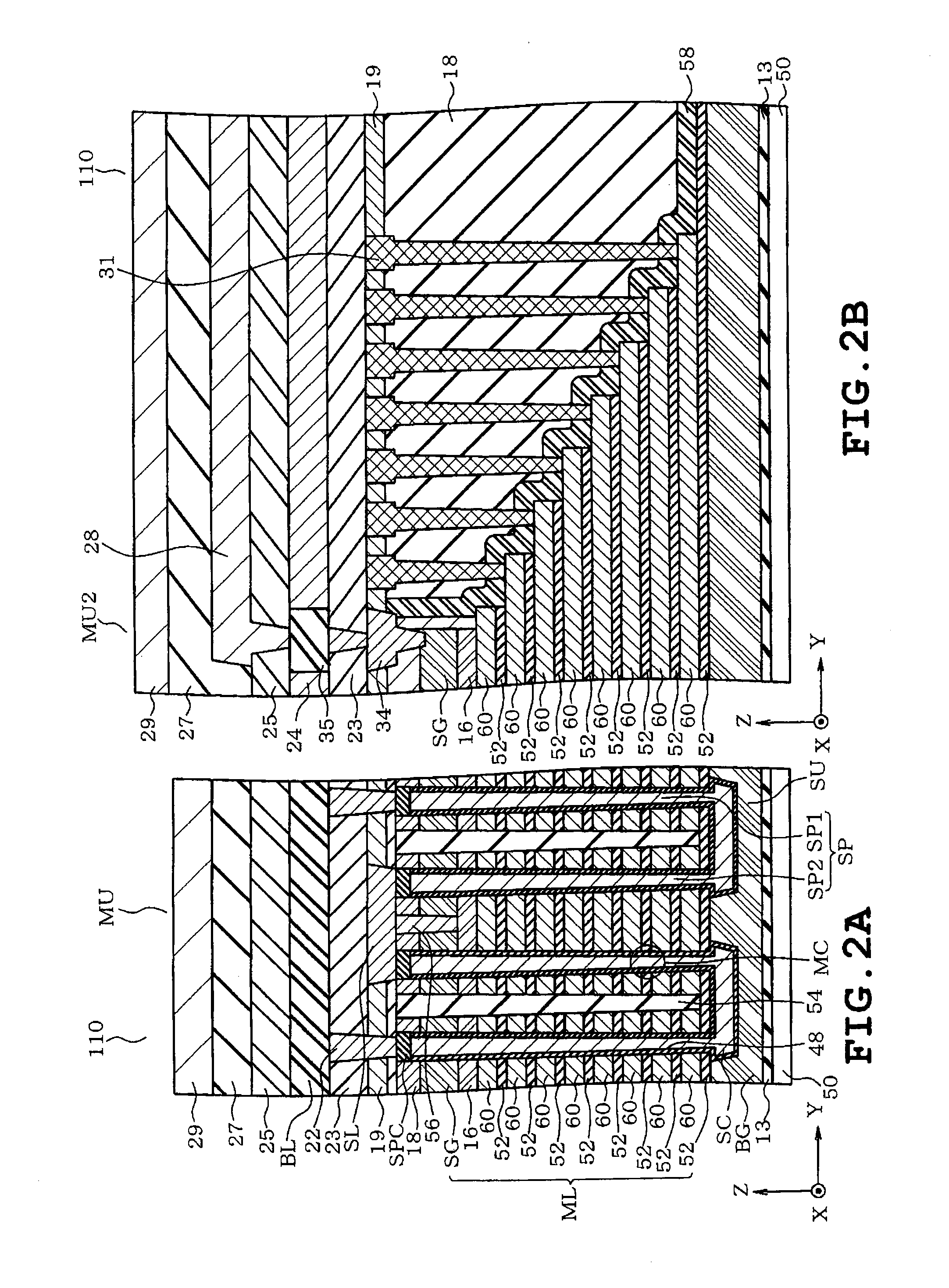Semiconductor device and method of manufacturing the same
a technology of semiconductors and semiconductors, applied in the direction of semiconductor devices, basic electric elements, electrical equipment, etc., can solve the problem of electrical shorting of the underlying conductive film
- Summary
- Abstract
- Description
- Claims
- Application Information
AI Technical Summary
Benefits of technology
Problems solved by technology
Method used
Image
Examples
embodiments
[0030]Embodiments are described hereinafter with reference to the drawings. The drawings are schematic and thus, are not necessarily consistent with the actual correlation of thickness to planar dimensions and the actual thickness ratios between each of the layers. Thus, the same portion may be illustrated in different dimensions or ratios in different figures. Further, directional terms such as up, down, left, and right are used in a relative context with an assumption that the surface, on which circuitry is formed, of the later described semiconductor substrate faces up. Thus, the directional terms do not necessarily correspond to the directions based on gravitational acceleration. In the drawings referred to in the following description, elements that are identical or similar to those already illustrated or described are identified with identical or similar reference symbols and may not be re-described. Further, in the following description, XYZ orthogonal coordinate system is us...
first embodiment
[0031]A first embodiment will be described hereinafter with references to FIG. 1 to FIG. 9.
[0032]One example of a stacked-type nonvolatile semiconductor storage device is illustrated in FIG. 1, FIG. 2A, and FIG. 2B as one example of a semiconductor device. More specifically, the example of the stacked-type nonvolatile semiconductor storage device is configured as a NAND-type nonvolatile semiconductor storage device comprising a semiconductor substrate, conductive films, pillar electrodes, and electron trap films. The pillar electrodes are formed into pairs such that a couple of pillar electrodes are interconnected at their lower portions. Each pair of pillar electrodes is disposed orthogonal to the semiconductor substrate so as to extend through a stack of conductive films. An electron trap film is disposed between the pillar electrode and the conductive film, thereby forming a storage element.
[0033]FIG. 1 is one example of a perspective view schematically illustrating the structure...
second embodiment
[0085]Next a description will be given on a second embodiment with reference to the drawings. FIG. 10 illustrates the second embodiment and is one example of a vertical cross-sectional view schematically illustrating the structure shaped like a stairway by conductive films 60 at wire connecting portion MU2 illustrated in FIG. 2B. FIG. 10 to FIG. 16 illustrate examples of 12 layers of conductive films 60 for convenience of explanation n; however, any number of conductive films 60 may be used.
[0086]In FIG. 10, twelve layers of conductive films 60 are provided as described above. Conductive film 60 in the lowermost layer is represented as conductive film 601, and subsequent layers are represented in sequence as conductive film 602, conductive film 603, and so forth, and conductive film 60 in the uppermost layer is represented as conductive film 612. Interelectrode insulating film 52 is provided between conductive films 60 for insulating conductive films 60. Conductive film 60 is formed...
PUM
 Login to View More
Login to View More Abstract
Description
Claims
Application Information
 Login to View More
Login to View More - R&D
- Intellectual Property
- Life Sciences
- Materials
- Tech Scout
- Unparalleled Data Quality
- Higher Quality Content
- 60% Fewer Hallucinations
Browse by: Latest US Patents, China's latest patents, Technical Efficacy Thesaurus, Application Domain, Technology Topic, Popular Technical Reports.
© 2025 PatSnap. All rights reserved.Legal|Privacy policy|Modern Slavery Act Transparency Statement|Sitemap|About US| Contact US: help@patsnap.com



